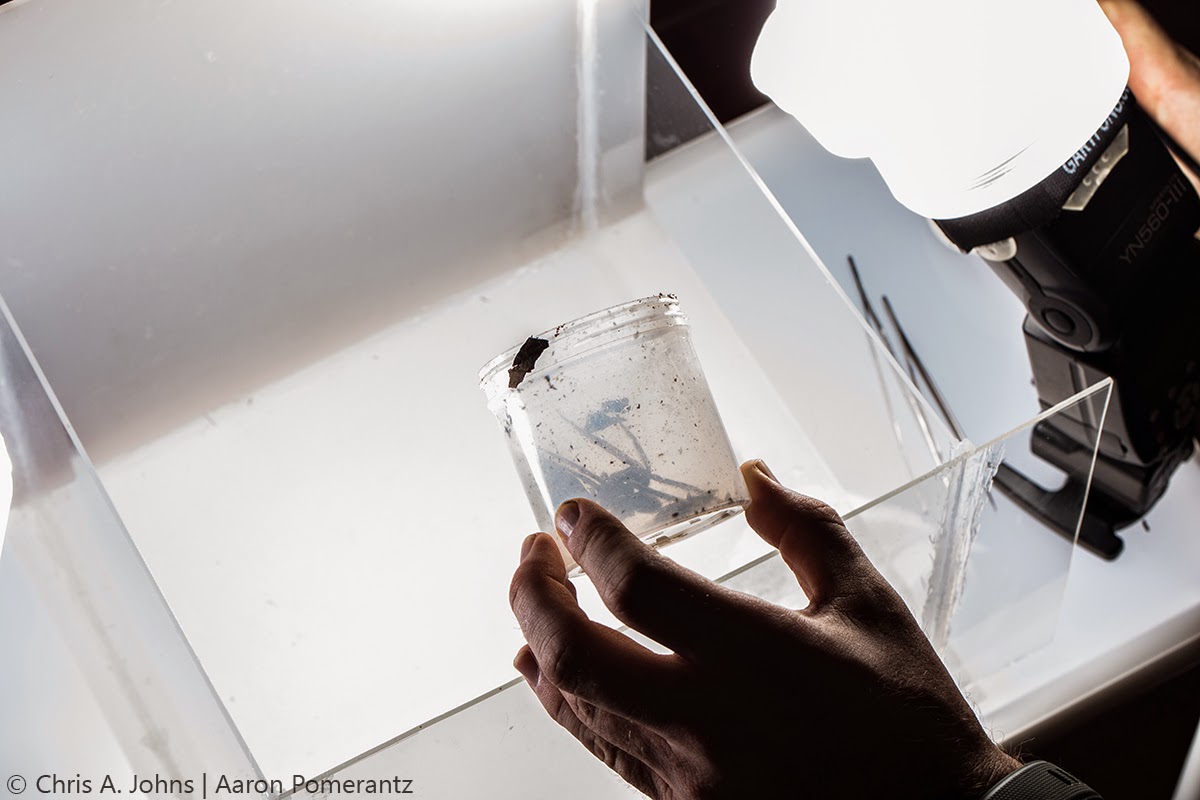As biologists and general biodiversity enthusiasts, coming across something as impressive as a Wandering Spider for the first time was quite an experience. It can be mildly alarming how abundant Wandering Spiders (Phoneutria spp.) are in the lowland Amazon, seemingly perched on every other leaf along the trail.
![]() Introducing our subject to the Meet Your Neighbors Field Studio to take diagnostic photos of these spiders in situ.
Introducing our subject to the Meet Your Neighbors Field Studio to take diagnostic photos of these spiders in situ.
The typical prey items of Phoneutria are larger insects found in and around the understory foliage of lowland Amazonian rainforests.
Often hyped as one of the deadliest spider in the world, some of the arachnids in this genus pack a bite full of several protein toxins. What’s more is that they’re frequently noted to be extremely aggressive once provoked, escalating from quite calm to very angry in a matter of moments.
It’s difficult to tell the eight species of Phoneutria apart from another. They vary widely in outward appearance and many of the diagnostic features are internal. For some species in this group, it’s not really known how toxic their venom is. Because of the difficulty in distinguishing species, and the fact that some Phoneutria may be more venomous than others, the common adage If you don’t know what it is, then don’t pick it up would apply in many ways to encountering a Wandering Spider in the forest.
But that’s not always an option for hyper curious biologists – especially ones that are most interested in enigmatic, often feared (sometimes misunderstood) creatures like the Wandering Spider! So, naturally, we got in close to snap some shots of these impressive arachnids this past winter. We photographed this spider for about an hour and it was very patient with us!
But that’s not always an option for hyper curious biologists – especially ones that are most interested in enigmatic, often feared (sometimes misunderstood) creatures like the Wandering Spider! So, naturally, we got in close to snap some shots of these impressive arachnids this past winter. We photographed this spider for about an hour and it was very patient with us!
 Introducing our subject to the Meet Your Neighbors Field Studio to take diagnostic photos of these spiders in situ.
Introducing our subject to the Meet Your Neighbors Field Studio to take diagnostic photos of these spiders in situ. Wandering Spiders have a very conspicuous threat display. Once perturbed, they usually lift two pairs of legs towards the offender and sway from side to side, following any movements by the potential predator. This is a defensive posture and shouldn’t be mistaken as unwarranted aggressiveness. If you see this display, you’ve most likely accidentally disturbed the spider’s perch.
The typical prey items of Phoneutria are larger insects found in and around the understory foliage of lowland Amazonian rainforests.
You can follow Chris on Twitter @Chris_A_Johns



